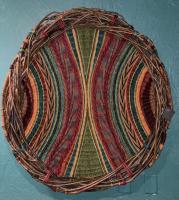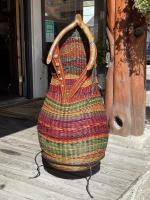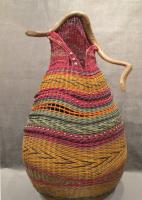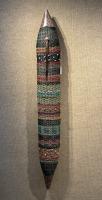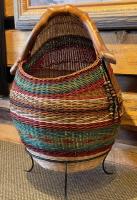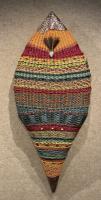Montana Blue Heron Biography scroll down to view works
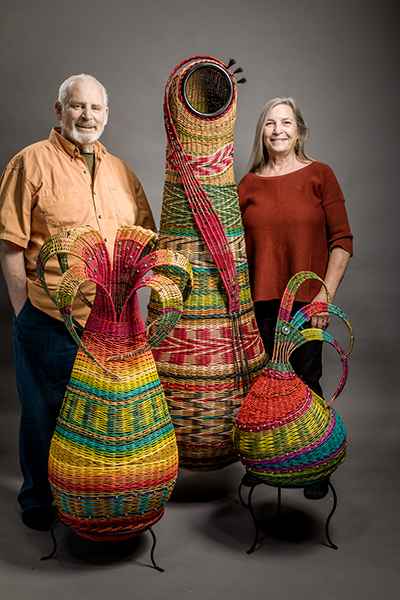
Montana Blue Heron, a legacy of creative weaving, is the artistic vision of Marilyn Evans, who has transitioned from a partnership to a solo artisan following the passing of her husband and collaborator, Bill Stevens in early 2022.
Marilyn, a self-taught weaver for nearly twenty years, has evolved her craft from fine beadwork to intricate willow structure weavings, venturing into the realms of woven sculpture and three-dimensional wall art. Her work has earned accolades such as "Best of Fiber" and "Best of Sculpture" at art shows across Western states, from Scottsdale to Sausalito.
The year begins, as does each weaving with the willow. Wands of willow and red osier dogwood are gathered in the Spring and replenished in the Fall. If Marilyn is picking willow, you may be assured that it is a beautiful, golden day along a silver ribbon of river somewhere in Montana, from the Tobacco and Flathead in the north to the Beaverhead or Bighole in the south. The bundles gathered represent the body of work to come over the next 6 months. Though our clients repeatedly tell us that our color is paramount in their decision, the work is in the willow for the two of us.
The willow is the foundation, the "bones" of every piece. It gives the grace of shape, strength, and durability. Over these bones are laid the flesh of weaving in colors and textures ranging from the brilliant to the sublime.
Color is the domain of Marilyn. Watching her work, like some combination of chef and chemist, she mixes her potions and powders to some recipe known only to her through her years of experience as a master dyer. She takes bundles of rattan and raffia, jute, seagrass, and sisal, plain drab and common, place them in her magic vats, and then hours later draw them out, gleaming with all the scintillating color her work has become known for.
From the dye works, the hued weavers are taken to the rinse tubs and then to the vats of soda ash and salts, where the colors are fixed. Finally, hung to dry in a breezy shade, the ritual is complete. The only other pertinent color procedure comes with a piece's final weaving. The last thing she does with each and every one is to spray them with an acrylic, ultra-violet coating, thus ensuring, to the very best of her ability, a color as strong and long-lasting as the willow underlying it all.
Another feature of note in our work is her use of antler and wood, not as an adornment but as an integral form affecting part of the piece. The antler demands little except judgment as to its applicability; does it work? Does it lend itself to the form we are creating? The wood, however, requires more. The antler is purchased while the wood is hunted for. The pieces of Aspen or Pine are used to frame our unique wall hangings and Aspen tapestry floor pieces. The Harlequin and Dancer sculptures must be found, sanded (3–4 finer and finer sandings), oiled (usually three coatings of Tung oil), joined and/or attached to the willow ribs, before becoming the final and often most dramatic element of the piece.
So, to sum it all up, Form, Color, Texture, and Imagination are the ingredients employed and seek to pass on to patrons and clients.

